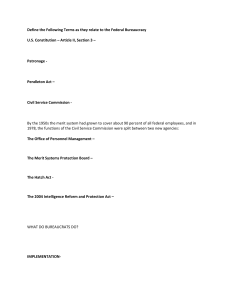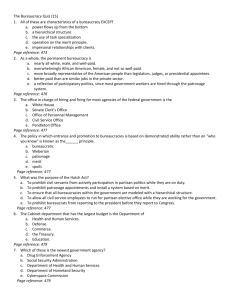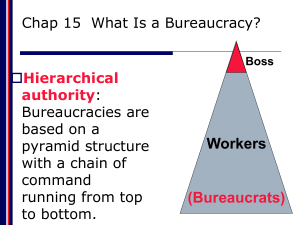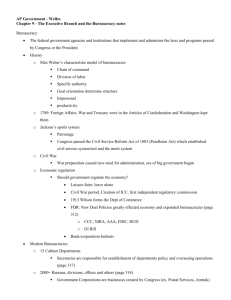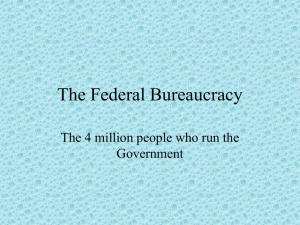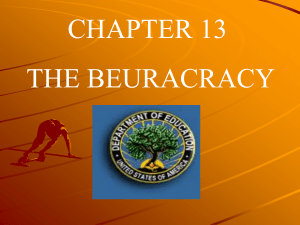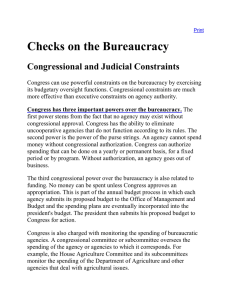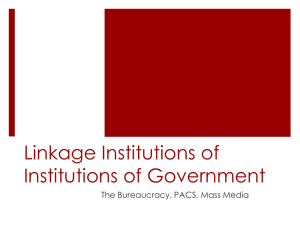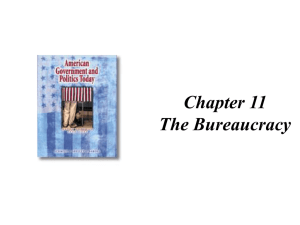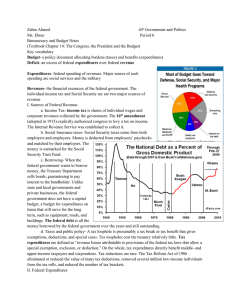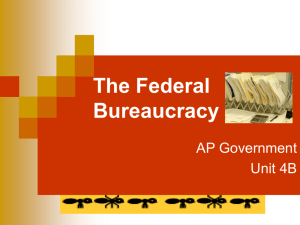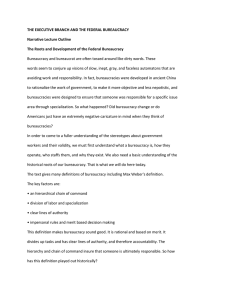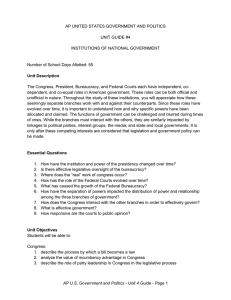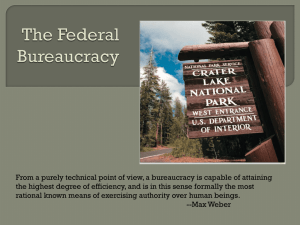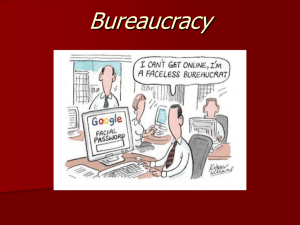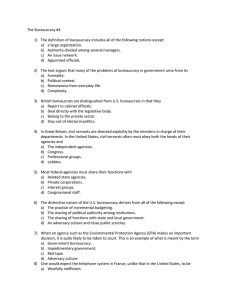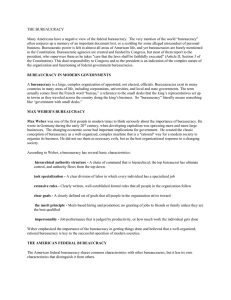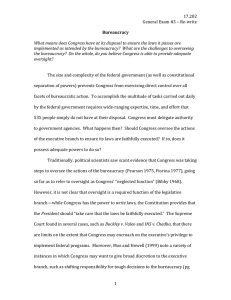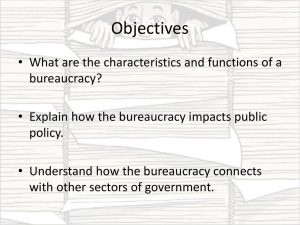File - Coach Jarrett's AP Gov and Econ
advertisement
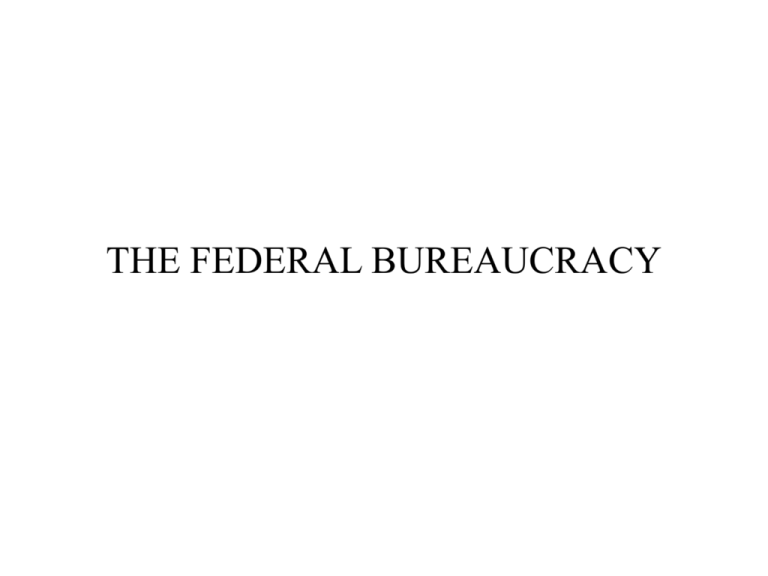
THE FEDERAL BUREAUCRACY • Bureaucracy: a large, complex organization composed of appointed officials. • Ex. Large corporations (Microsoft) • Ex. Universities • Ex. Government Agency Weber’s theoretical view: • • • • • Hierarchical authority structure Task specialization Extensive rules Merit principle Standard operating procedures Constitutional Basis: •Found in Article II of the Constitution in the reference to the creation of executive departments. •The Constitution permits both the president and Congress to exercise authority over the bureaucracy. •Every senior appointed official has at least 2 masters: one in the executive branch and the other in the legislative. History of: • 1789 James Madison – bill to create a Dept. of State to assist the new secretary of state, Thomas Jefferson. • Started with only 9 employees • From 1816 to 1861 increased eightfold. - 86% of growth was Post Office • Civil War was watershed in bureaucratic development. - fighting led to hiring many new officials and creating many new offices. - revealed administrative weakness of fed. gov’t – led to movement of reform for improvement in quality and organization of fed employees - war was followed by period of rapid industrialization and the emergence of a national economy. • 1861 – 1903 new agencies were created to deal with sectors of economy. - Dept. of Agriculture (1862) - Dept. of Labor (1882) - ICC (1887) – Federal gov’t begins to regulate economy - Dept. of Commerce (1903) • Before ICC, agencies primary role was to serve, not to regulate. • 1st attempt at reform was 1871, Congress passed the Civil Service Commission. (failed due to inadequate funding) • Congress passed the Pendleton Act (Civil Service Act of 1883) after President Garfield was shot by a disgruntled office seeker. - set up merit as the criteria for hiring, promoting, and firing federal employees. • Hatch Act (1939) placed legal limitations on federal employees. - cannot run for office; actively campaign for a candidate; may not collect funds, organize rallies, or circulate nominating petitions. - may not join formal unions, but are able to form gov’t unions. Ex. Air Traffic Controllers • Civil Service Reform Act (1978/Carter) - created Office of Personnel Management and the Merit Systems Protection Board. - replaced the Civil Service Commission Today’s Bureaucracy • Product of two events: the Depression and New Deal programs, and WWII - features of bureaucracy set as a result of changes in public attitudes and in constitutional interpretation that occurred during these periods. - Gov’t now expected to play an active role in dealing with economic and social problems. - WWII was 1st time gov’t made heavy use of fed. income tax to finance its activities • btw 1940 and 1945 tax collections increased from $5 bill. to $44 bill. - 1st great financial boom for the gov’t. - After war, country believed in large military and that social programs begun before the war should enjoy the heavy funding made possible by wartime taxes. - Permitted the sustained expansion of programs and entrenched a large # of administrators in Washington. • • The Alphabet Agencies: FTC (1914) FDA (1931) FCC (1934) SEC (1934) EPA (1970) FEC (1975) are quasi legislative – act legislative when issuing regulations • are quasi judicial – act judicial when enforcing penalties for violations of their regulations Relations with other government branches • • • 1. Although independent, bureaucracies are linked to president by appointment and direction and to Congress through oversight. Power depends on extent to which appointed officials have discretionary authority – the ability to chose courses of action and make policies that are not spelled out in advance by laws. Power has grown enormously – Congress has delegated authority to agencies in 3 areas: Paying subsidies to particular groups and organizations in society (farmers, veterans, scientists, schools, universities, hospitals) 2. Transferring $ from the federal government to state and local governments (grant-inaid programs) 3. Devising and enforcing regulations for various sectors of society and the economy. • Best example of the interrelationship among bureaucracies and the gov’t, is the iron triangle concept. Congressional oversight: • 1. 2. 3. Congressional supervision takes several forms: No agency may exist, except for a few presidential offices, without congressional approval. No $ may be spent unless it has first been authorized by Congress. May be permanent, fixed for a number of years, or annual. Authorized funds cannot be spent unless they are also appropriated. Power of Appropriations Committees
